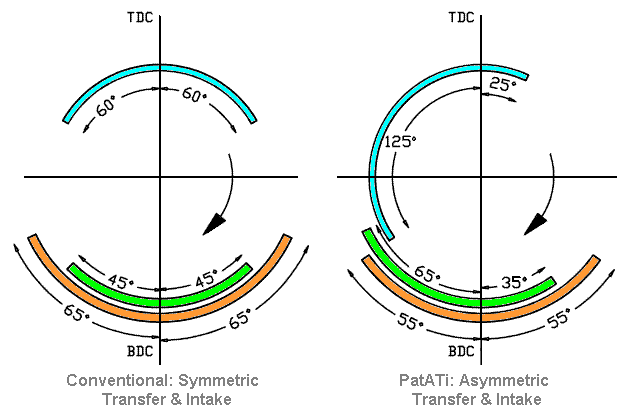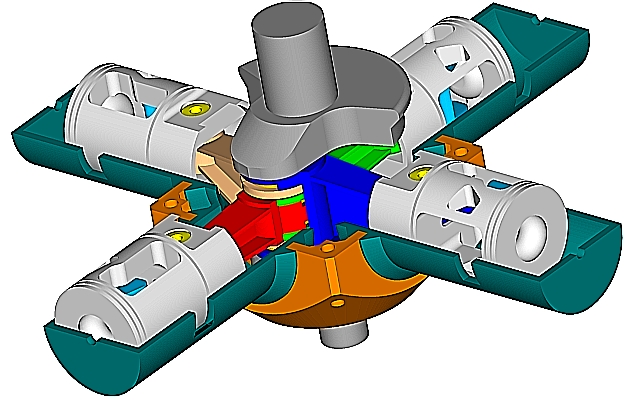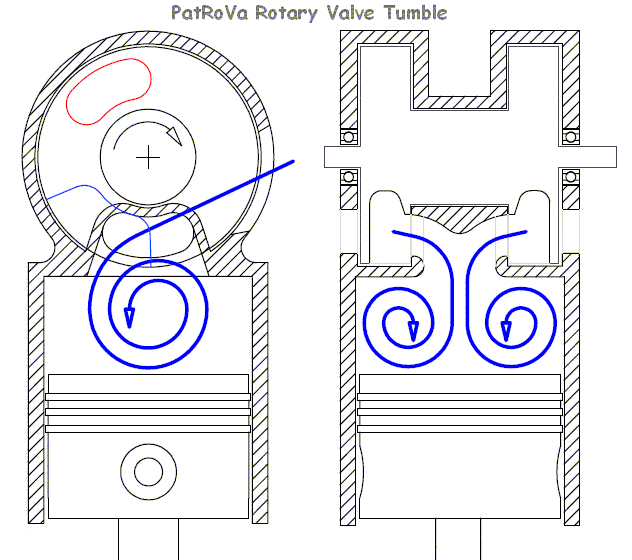Hello Tommy Cookers.
You write:
“the Bishop RoV seems to have offered Ilmor no better breathing than did their developed poppet valve head”
Quote from the
http://home.people.net.au/~mrbdesign/PD ... echBRV.pdf
“In
1997 Bishop started working with Ilmor Engineering (later Mercedes-Ilmor) to develop their rotary valve technology for F1 engines.
The initial development was carried out on 300cc single cylinder bottom ends supplied by Ilmor at Bishop’s premises in Sydney Australia.
Bishop was responsible for the cylinder head design, development and demonstration of the required durability and performance.
By late 2000 back to back testing with the poppet valve single cylinder engine demonstrated a 10% power advantage and improved durability.
In 2002 the first V10 engines using this technology were built and tested exhaustively.
A completely new V10 engine was designed and manufactured in 2003.
Testing of these engines was prematurely terminated when the FIA announced changes to Article 5.1.5 of the engine regulations late in 2004 with the specific purpose of banning this rotary valve technology.
. . .
Whilst the rotary valve engine has demonstrated breathing capacity that is at least equivalent to the best F1 poppet valve engines, it has the huge advantage that it does this without the dramatic reduction in life that occurs with F1 poppet valve heads.
As inertia induced loads in the valve train are absent in the rotary valve, the forces that destroy the poppet valve heads are also absent.
Further the mechanical and gas loads seen by the valve are essentially independent of speed.
The only issue affecting durability that changes with engine speed is the peripheral speed of the sealing elements and the bearings. As the peripheral speed of the valve over the sealing elements is approximately 80% that of the maximum F1 piston ring velocity, this is of little concern.
In production poppet valve engines, engine life considerations require changes that greatly curtail their breathing capacity from the level achieved in F1. This is clearly not the case with the rotary valve and Bishop’s research suggests a production rotary valve has a breathing capacity up to 45% greater than that observed on current 4 valve production engines.
. . .
On the power front both the rotary and poppet valve engines were designed for the same maximum speed and both engines produced near identical power outputs despite far greater resources being devoted to the development of the poppet valve engine. From a F1 perspective the rotary valve had the potential to increase power faster as it could increase its breathing capacity by merely increasing the valve diameter and unlike the poppet valve it had no inertia issues preventing its operation at higher speeds.”
End of Quote
One can consider the claims of the Bishop team as questionable.
However the dates (bold text) and the facts (the banning, by FIA, of the rotary valves from F1) do support Bishop's claims.
The guys in Bishop claim they achieved a 10% power increase as compared to the original single cylinder Ilmor poppet valve engine.
And they focus, again and again, on the inertia loads in the cylinder head of the poppet valve engine.
With a given cylinder capacity, the bore increases to make room for bigger valves providing freer breathing and more power at higher revs.
The piston gets bigger and heavier. But its stroke is shorter limiting the increase of the resulting inertia loads at the higher revs.
Together with the piston, the intake and exhaust poppet valves get bigger and heavier. But in this case the stroke the bigger valves perform (i.e. the “valve lift”) is not shorter but longer than the stroke of the smaller valves. The longer stroke a valve performs combined with the increased mass of the valve and with the increased revs of the engine give substantially heavier inertia loads into the cylinder head.
For instance, the increase of the Panigale 1299 bore from the stock 116mm to 128mm (as described in a previous post) allows the increase of the intake valve diameter from 46.8mm to 51.5mm (46.8*128/116) (i.e. by some 10%) and the increase of the intake valve lift from 16mm to 17.6mm (i.e. by some 10%, too).
Similarly, the exhaust valve diameter increases from 38.2mm to 42,1mm and the exhaust valve lift increases from 14.3 to 15.8mm.
To keep the same per cylinder capacity, the piston stroke of the PatRoVa Panigale 1299 drops from the stock 60.8mm to 50mm, i.e. it drops by more than 17%.
According the previous calculations, see what happens in case Ducati decides to “destroke” their Ducati Panigale 1299 for the sake of more specific power:
At 14,000rpm (wherein the rev limit of the PatRoVa Panigale 1299 “was set” to give the same mean piston speed with original Panigale 1299 at 11.500 wherein its rev limiter is) the acceleration the piston undergoes is increased by 22% (revs ratio square times strokes ratio, i.e. ( 14,000 / 11,500 )^2 * ( 50.0 / 60.8 ) )
At the same 14,000rpm the acceleration the bigger poppet valves undergo is increased by 63% (revs ratio square times valve lifts ratio, i.e. ( 14,000 / 11,500 )^2 * ( 17.6 / 16.0 ) ).
This is about
three times more than the increase of the piston acceleration.
If I were Ducati and wanted to seriously "destroke" the engine, I would worry
three times more for the Desmodromic mechanism than for the piston.
In simple words for the non technically oriented:
The acceleration increases with revs square if everything else remain unchanged.
In the case of the piston the sorter piston stroke decreases the acceleration the piston undergoes.
In the case of the valve train, the longer valve lifts increase the acceleration the valve train parts undergo.
Compare the case with the Bishop rotary valve wherein:
“From a F1 perspective the rotary valve had the potential to increase power faster as it could increase its breathing capacity by merely increasing the valve diameter and unlike the poppet valve it had no inertia issues preventing its operation at higher speeds”.
Compare the case with the PatRoVa rotary valve.
Either at 11,500 rpm, or at 14,000rpm, or at 24,000rpm of the crankshaft it runs smoothly and nicely without vibrations, without inertia loads. .
The total inertia force and the total combustion force on the bearings of the PatRoVa rotary valve at, say, 24,000rpm of the crankshaft is zero, no matter how much it weighs..
In comparison, calculate the increase on the inertia and combustion loads on the bearings of the camshafts of the Desmodromic poppet-valve cylinder-head of the short stroke Ducati (128mm bore, 50mm stroke) at 14,000rpm (the combustion load is significant for the initial opening of the exhaust valves).
Do I miss something?
Is the dominant limiting factor the acceleration of the piston or the accelerations related with the valve train?
You write:
“your 3cc '18' OS engine example supports my original argument (surprisingly well considering that it's 200x smaller)
whilst it has 3.37x the piston acceleration of the Ducati, this is due to its b:s ratio of only about 1.04 if debored to this b:s ratio the Ducati piston is about 30% of its present mass”
The weight of the piston of the Panigale 1299 is 480gr, only 2% more than the piston of the Panigale 1199 (116mm vs 112mm diameter).
The bore to stroke ratio of the OS.18 engine is 1.066, not 1.04
Question: where the “30%” come from?
Thanks
Manolis Pattakos





